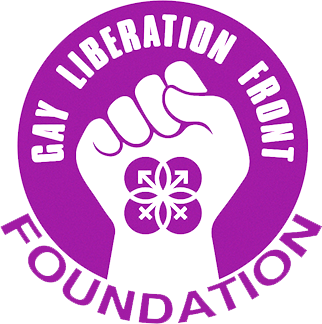The GLF 95th Street Collective: Hanging Out on Christopher Street, Summer 1970.
Excerpted from the memoir, “50 Years from Stonewall: A Gay American Life in a Time of Change” by John Knoebel
One of the other joys in those months with my 95th Street Collective was taking the subway down to the Village on warm weather evenings to see what was up. To me 1970 was the true “Summer of Christopher Street.” Many people said it was the first time that any street in New York had an ongoing nightly gay-presence. It’s where a whole new generation of out and proud gay men found they finally had a place to call home. That year the men’s late night cruising street had shifted from Greenwich Avenue between 6th and 7th Avenues to around the corner onto the first few blocks of Christopher Street making everything all the more busy. There was constant foot traffic up and down the street with guys meeting, making friends, cruising, laughing, dressing in outrageous clothes, getting stoned, and discovering a physical, public place of joy and family for themselves that had never existed before.
People who know the city well may remember that one side of the first few blocks of Christopher Street is lined with old brownstones with wide stone steps in front. Our 95th Street Collective would take over one of the stoops and just watch the world go by. It was a genuine “scene.” Fun moments happened when men stopped to chat and sometimes one of us would leave with them. And then, too, it was always a delight when familiar village regulars—like GLF stalwarts Bob Kohler or Jerry Hoose—came by to tell us the latest news on the street. Many times our good GLF friends, drag queens (as they called themselves in those days) Marsha P. Johnson, Sylvia Rivera or the lovely Nova, would come by to say hello before they headed way down to the Silver Dollar Restaurant near the river. It was a dive, but a gay-tolerant place that stayed open until the wee hours. Sometimes, our group also went down to the Silver Dollar for a late night sandwich and coffee.
One night Sylvia Rivera had an unfortunate fight with the straight owner of the place and got kicked out. The owner was angry because for well over an hour, Sylvia had sat at a table without ordering anything and was swearing at the other customers. So after literally being roughly shoved out the front door, Sylvia picked up a trash can out front and smashed their big plate glass window, then dashed away up the street. Not unusual conduct for the fiery Sylvia who regularly acted out of anger and frustration generated by her hard life experiences as well as by her well-known drug use. Sylvia was not one for calm discussion and quickly used foul-mouthed language whenever provoked—something that often defeated her good intentions and put many people out of sorts with her. She was so unlike the sweet and mellow, loved-by-all Marsha that it was hard to understand how they managed such a close friendship. But both had come from difficult backgrounds. Sylvia’s parents had kicked her out of her home when she was still a teenager and, like Marsha, she had gotten by for years as a sex-worker picking up Johns near the piers and underneath the then-elevated West Side Highway. They were often beaten-up when the men discovered that they were not real women—despite the wigs and make-up that they wore to fit in with the many female prostitutes who worked the same streets as they did. Both were subject to frequent harassment from the police. Marsha said she had been arrested over 100 times. It was a judge who once asked Marsha what the middle initial “P” in her name stood for and she famously answered the “P” was for “Pay it no mind,” after which he dismissed her case.
Of all the drag queens on the street that year, I had a closer friendship with “Nova.” Her drag attire always seemed a little more on the “chic” side. We’d pass time on the street and have serious talks about people and politics. She had a friend who had a car and one time she had me join them for a joy ride up and down the street laughing and calling out to people as we passed by. When Nova disappeared late that summer, I always had the suspicion that she had perhaps shed her “Nova” persona and returned to college somewhere. I don’t think anybody ever knew where she came from. I also knew a friendly young guy in semi-drag on Christopher Street who went by the name of “Ruth Truth.” He told me he was always a little afraid of walking home by himself to his dumpy apartment building a few blocks off Christopher Street so sometimes I’d walk along there with him and wave goodbye as he climbed safely up the steps to his front door.
Another aspect of our Collective’s stoop sitting on Christopher Street was the encounters we had with the police walking by. Claiming it was illegal for us to sit on the stoops, they’d gesture with their billy clubs and order us to stand up and get moving. They could be quite insistent when we stayed put sassing back at them. Eventually, we would get up very slowly pretending we were really leaving. Instead we’d walk nonchalantly out of sight around the block, pass by Julius’s bar on West 10th Street, then continue back around to Christopher Street and sit right back down on our stoop. It was a game we played with the officers quite a few times that summer.
